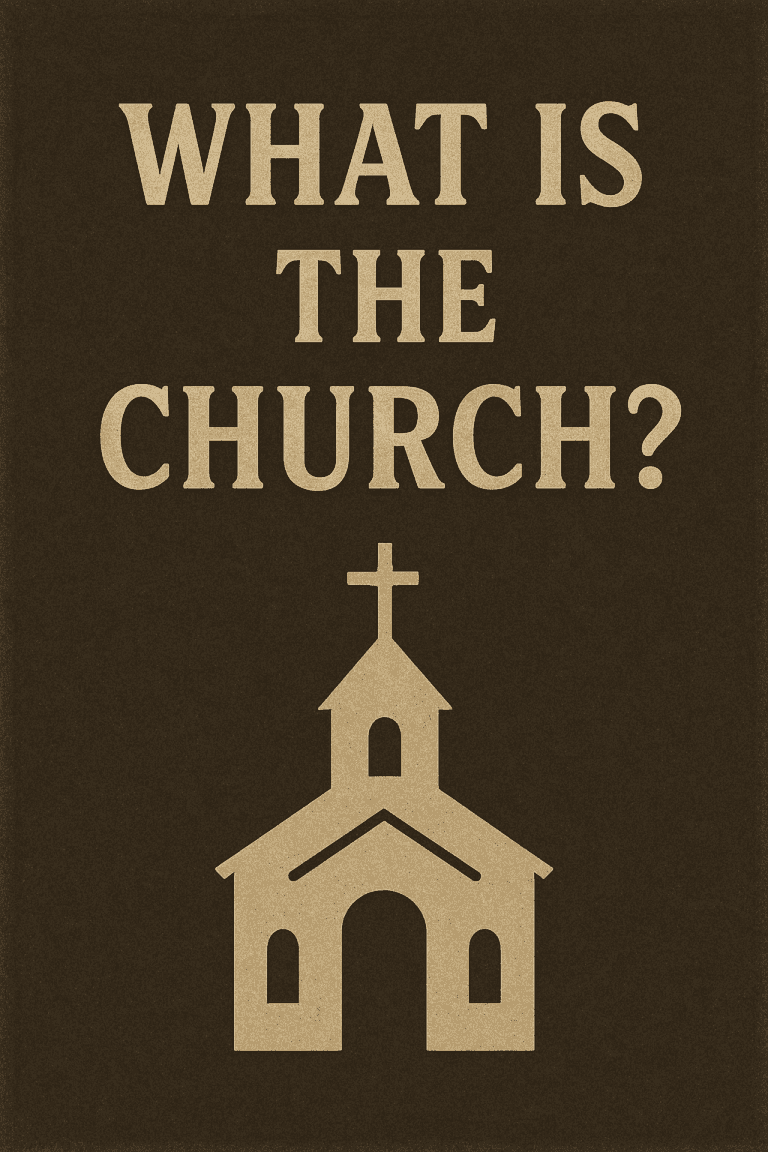What Is Ba’al Worship? A Biblical and Historical Overview
What is Ba’al worship? It’s more than a footnote in Israel’s story. More than a pagan ritual in some forgotten corner of the Old Testament. It was a direct challenge to the living God—a seductive, violent, and deeply rooted threat that plagued God’s people for centuries.
And it still whispers today.

Because Ba’al may have lost his altar, but he hasn’t lost his appeal. What Israel faced then is what the Church faces now: the temptation to blend loyalty to God with the pursuit of comfort, control, and cultural acceptance. Understanding this worship, then, is not just a history lesson—it’s a mirror.
Who Was Ba’al?
The name “Ba’al” means “lord” or “master.” In the ancient world, it wasn’t a personal name so much as a title—used across regions to refer to powerful gods who supposedly ruled over land, weather, and prosperity. The Bible’s references to Ba’al often point to a single dominant figure: the storm god of Canaan. But the term was also used broadly to describe dozens of local deities worshiped across the land.
The Jewish Encyclopedia notes that “Ba’al” functioned as a territorial designation—there was Ba’al of Peor, Ba’al-Zebub, and many others. These weren’t just idols—they were spiritual systems, culturally entrenched and fiercely defended. To the average Canaanite, Ba’al wasn’t a false god. He was survival. He was rain, food, and fertility.
This made the worship of Ba’al far more dangerous than mere statue-bowing. It became deeply interwoven into the economics, sexual ethics, and political alliances of entire cities and nations.
From archaeological digs in Ugarit and Sidon to discoveries in Hazor and Gezer, we know Ba’al temples were real, extensive, and influential. The Ba’al Cycle, a series of Canaanite religious texts found in Ugarit, describes Ba’al as the son of Dagon, wielder of thunder, and vanquisher of the chaotic sea god Yam and the death god Mot. These stories framed Ba’al as the bringer of life and order, the great benefactor of the earth.
So when Israel entered the land of Canaan, they weren’t entering a spiritual vacuum. They were stepping into a land drenched in Ba’al worship. The altars were already built. The systems were already in place. And the temptation to blend in—to worship Yahweh and Ba’al—would become Israel’s constant downfall.
Ba’al Worship in the Old Testament
In the Time of the Judges
Judges 2:11–13 lays the groundwork:
“And the people of Israel did what was evil in the sight of the Lord and served the Baals. They abandoned the Lord… and went after other gods… They provoked the Lord to anger.”
After Joshua’s generation passed away, the people didn’t drift—they sprinted toward idolatry. Idolatry became the norm. Over and over, God raised up judges to deliver His people, but as soon as the judge died, the people returned to their idols.
The most vivid example comes in Judges 6. God calls Gideon to tear down his father’s altar to Ba’al. He does it at night because he knows how the people will react. And they do. The next morning, the men of the town demand his death—not for building something wicked, but for destroying it. That’s how far the nation had fallen. Ba’al wasn’t just tolerated. He was protected.
Gideon earns the nickname “Jerubbaal”—meaning “Let Ba’al contend.”
Under the Kings of Israel and Judah
The rot deepens during the reign of Ahab and Jezebel. Ahab marries into a Phoenician royal line and fully embraces the worship of Ba’al. He builds a temple for Ba’al in Samaria and sets up a state-sponsored priesthood.
First Kings 16:33 says:
“Ahab did more to provoke the Lord, the God of Israel, to anger than all the kings of Israel who were before him.”
This sets the stage for one of the most famous confrontations in the Bible—Elijah on Mount Carmel. It’s not just a contest of fire. It’s a theological war. Elijah stands alone against 450 prophets of Ba’al. He gives them the first move. They shout, dance, cut themselves, and cry out all day. But nothing happens.
Then Elijah prays once, and the fire of Yahweh falls. It consumes the sacrifice, the wood, the stones, and the water. The people fall on their faces and cry, “The Lord, He is God!”
But the repentance doesn’t last. The idolatry resurfaced again and again—especially under King Manasseh, who fills Jerusalem with altars to Ba’al and sacrifices his own son in fire.
What Did This Worship Actually Involve?
To grasp the seriousness of this idolatry, we have to see it the way God saw it—not as superstition or cultural misunderstanding, but as spiritual treason. Ba’al worship wasn’t neutral. It was a total rejection of the holiness, mercy, and sovereignty of God.
1. Idolatry in High Places
Worship of Ba’al often took place at “high places”—hills, groves, and elevated platforms meant to reach closer to the heavens. These places were decorated with carved images and sacred poles (Asherim) representing fertility and the Canaanite goddess Asherah, Ba’al’s consort.
These idols symbolized Israel’s desire to mix the sacred with the sensual. Instead of relying on Yahweh for provision, they tried to manipulate their environment through ritual—hedging their bets with Ba’al when the rains didn’t come.
2. Ritual Prostitution
Sex was central to the religion of Ba’al. The religion was built on the idea that human intimacy could stir the gods to bring rain and fertility to the land. So cult prostitutes—both male and female—served at Ba’al temples.
This wasn’t private sin. It was public worship.
The lure wasn’t just spiritual—it was sensual. It gave people what they wanted, on their terms, with just enough religious veneer to silence the conscience.
3. Child Sacrifice
Perhaps the most horrifying element was its demand for child sacrifice. Especially where Ba’al was conflated with Molech, parents would burn their infants in fire as an offering.
God speaks of it with brokenhearted grief:
“They built the high places of Baal… to burn their sons in the fire… which I did not command or decree, nor did it come into My mind.” (Jeremiah 19:5)
These were not one-off atrocities. Archaeological excavations in Carthage, Tyre, and Gezer have uncovered urns filled with the charred remains of infants—often with inscriptions dedicating them to Ba’al. Even Israelite kings took part. That’s how dark the deception became.
Why Did Israel Keep Returning to Ba’al?
The answer lies in what Ba’al offered—prosperity, sensuality, and social acceptance. All without the demands of holiness.
Yahweh called Israel to trust Him by faith. Ba’al offered tangible rituals and visible images. Yahweh called for purity, patience, and covenant loyalty. Ba’al offered immediate gratification and cultural momentum.
In short, Ba’al let you stay in control.
Israel didn’t abandon God outright. They tried to worship both. But God doesn’t share worship. And Ba’al doesn’t share power.
God’s Response to Idolatry
God never treated Israel’s love for Ba’al as a minor issue. He spoke of it in the language of marriage and betrayal. He called it adultery. The prophets didn’t preach vague morality. They named names. They stood at the gates and in the courts and cried out against the altars and high places.
Prophetic Warnings
- Elijah mocked the silence of Ba’al’s prophets and called fire from heaven.
- Hosea compared Israel to an unfaithful wife, chasing other lovers.
- Jeremiah wept over Jerusalem, whose people had filled the city with Ba’al’s altars.
- Ezekiel watched as the glory of God departed the temple, defiled by false gods.
God was patient. But He was not passive.
The Jehu Purge
In 2 Kings 10, Jehu orchestrates a brilliant takedown. He pretends to host a great sacrifice for Ba’al, invites all the worshipers, then seals the doors and slaughters them. The temple is demolished, the idols smashed, and the site turned into a latrine.
It was one of Israel’s few national purges. But even then, the problem wasn’t over—false worship continued in other forms.
Idol Worship and Archaeology: Confirming the Biblical Record
Skeptics often reduce the talk of worshipping Ba’al to mythology or symbolic language. But history won’t allow that. The evidence is overwhelming—both inside and outside the Bible.
1. The Ba’al Cycle
Discovered in Ugarit (modern Syria), these clay tablets from around 1400 B.C. describe Ba’al’s battles against Yam (the sea) and Mot (death). In them, Ba’al is praised as the giver of rain and conqueror of chaos. These myths framed Ba’al as the theological centerpiece of an entire civilization.
2. The Eshbaal Inscription
In 2015, archaeologists at Khirbet Qeiyafa found an inscription bearing the name “Eshbaal”—a name also found in 1 Chronicles 8:33 and 1 Samuel 14:49. Scholars confirmed its association with Ba’al, showing how much compromise had seeped into Israelite identity—even their names reflected it.
3. Child Sacrifice Sites
Excavations at Carthage, Tyre, and Israel have revealed thousands of urns containing cremated remains of infants. Inscriptions confirm these were sacrifices to Ba’al and Molech.. These were not anomalies. They were systemic, ritualized acts of worship.
4. World History Confirmation
The World History Encyclopedia documents how Ba’al worship dominated the Phoenician and Canaanite world. He was worshiped from Egypt to Mesopotamia, mentioned in trade routes, city names, and royal records. The biblical warnings were not exaggerated. If anything, modern archaeology confirms their accuracy.
Modern Echoes of This Irreligious Worship
You don’t need a carved statue or hillside altar to chase false gods. The form has changed—but the function remains.
- It shows up in the prosperity gospel—where God is reduced to a tool for personal gain.
- It shows up in the abortion industry—where children are sacrificed for convenience.
- It shows up in entertainment—where sensuality is glorified and conviction mocked.
- It shows up in our own hearts—when loyalty to Christ gets mixed with cultural compromise.
As Church and Family Life puts it: stadiums, screens, and self-obsession have become new altars. We don’t call it Ba’al worship. But the symptoms are the same.
God’s Mercy After Judgment

Even with all the warnings, Israel still stumbled. They wandered back to the high places, back to the lies. So God gave them what they wanted—He handed them over. The northern kingdom fell to Assyria. The southern kingdom to Babylon. Jerusalem was burned. The temple destroyed.
But God didn’t quit.
In Hosea 2, after exposing Israel’s spiritual adultery, God speaks these shocking words:
“Therefore, behold, I will allure her, and bring her into the wilderness, and speak tenderly to her… And in that day… you will call me ‘My Husband,’ and no longer will you call me ‘My Baal.’” (Hosea 2:14, 16)
God doesn’t just cleanse idols—He restores hearts. The covenant isn’t just enforced. It’s renewed. Israel will no longer confuse Him with Ba’al. They will know Him by love, not fear.
So What Is Ba’al Worship—Really?
This kind of idol worship isn’t about ancient altars. It’s about modern hearts chasing prosperity, sensuality, or power apart from God.
It’s trusting something else more than Christ.
It’s the pursuit of pleasure at the cost of purity.
The craving for control instead of trust.
The hunger for success without holiness.
Choose Whom You Will Serve
Joshua put the decision plainly:
“Now therefore fear the Lord and serve him in sincerity and in faithfulness. Put away the gods that your fathers served… Choose this day whom you will serve… But as for me and my house, we will serve the Lord.” (Joshua 24:14–15)
That choice still stands.
You can chase Ba’al in all his modern forms. Or you can bow to the One who sends the rain, opens the womb, and satisfies the soul. The One who gave His Son instead of demanding yours. The One who calls you out of compromise and into covenant.
Ba’al worship ends when the heart says: enough. No more idols. Only Christ.
Want to know more about the grace of God in His sovereignty over salvation? Check out this free reference.
Walt Roderick is a Christian writer who cares more about biblical clarity than online applause. He writes to strengthen believers and confront spiritual drift.






